abatis - A form of road block formed by felled trees.
AK-47 - Soviet manufactured Kalashnikov fully-automatic assault rifle, 7.62-mm. Had a distinct popping sound you will never forget once it has been fired at you.
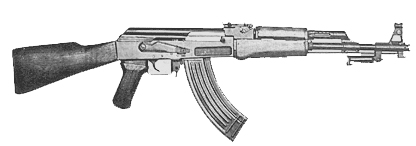
ambush - Setting up in a concealed position to make a surprise attack on any enemy personnel moving through your carefully prepared killing zone.
B-40 - A shoulder fired, rocket propelled grenade launcher. This image came from an excellent website at: http://www.lcompanyranger.com/rpgpage.htm (no longer available online)

BDA - Bomb Damage Assessment. A patrol into an area to find out what
effect a bombing attack had on the enemy.
Beehive Round - M546 APERS-T beehive rounds are intended primarily for antipersonnel use at close range. The round is loaded with 8,000 8-grain steel flechettes. It is devastating against ground troops. It cannot be fired over the heads of exposed friendly personnel. The flechettes are fin stabilized steel projectiles similar in appearance to arrows. It got it's name from the sound the flechettes make while flying overhead, much like a swarm of angry bees.
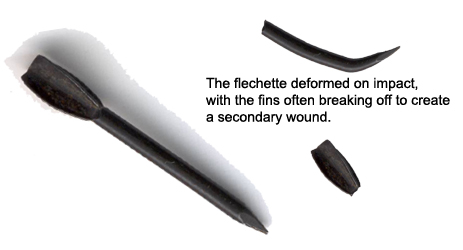
bouncing Betty - anti-personnel mine with two charges, the first blows the main charge up about waist level, then the main charge explodes.
BOQ - Bachelor Officer's Quarters. Building shared by unmarried Commissioned Officers.
Breaking Squelch - While the three man listening post outside the unit perimeter is observing radio silence, to avoid detection by the enemy, as they "listen" for approaching enemy soldiers, they do not talk when giving a response to a request for a situation report (SITREP) from the Command CP every half hour. Instead they key the handset a predetermined number of times to indicate everything is OK or different number of times or no response at all to indicate something is wrong. The static crackle caused by depressing the handset talk button is called squelch.
CA - Combat Assault. Landing troops by helicopter into a hostile area.
CAR-15 - An M-16 carbine with a metal telescoping butt stock and a shortened barrel.
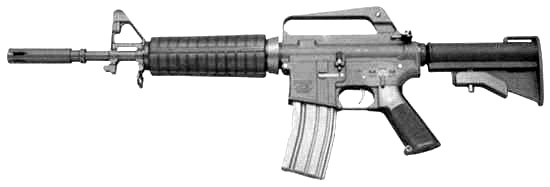
Chicom Grenade. - Similar to the German "Potato Masher" grenade. It usually had a bamboo handle with a wooden screw cap on the end attached to a friction fuse running down the middle. They were crude, but effective. I woke up one morning to find one lying next to my head. It was thrown in a brief perimeter disturbance during the night, which I had not gotten up to investigate, but since it was raining the fuse had gotten wet and it failed to ignite.
Chieu Hoi - Vietnamese Phrase meaning "open arms". Referred to the program offering amnesty to NVA who surrendered.
This site offers more details on the Chieu Hoi pass program and others:
http://www.hill4-11.org/memorabilia/chieu.html
Chloraquine-Primaquine -- Dapsone - In the Central Highlands the malaria infected mosquitoes were so bad that everyone in the field had to take "two whites and a yellow". The two small white pills were Dapsone and taken daily. The very large yellow pill was the Chloraquine-Primaquine and it was taken once a week. The whites were very bitter and the yellow was so large that it was very difficult to swallow, therefore I required the medics to administer them personally.
chopper - slang for helicopter, also referred to as the bird.
Claymore Mine - An antipersonnel mine that uses C-4 plastic explosive
to spray 700 steel ball bearings in a 60 degree arc, with a 50 meter wide
killing zone at 50 meters out. Electrically detonated and used primarily for
perimeter defense and ambushes.
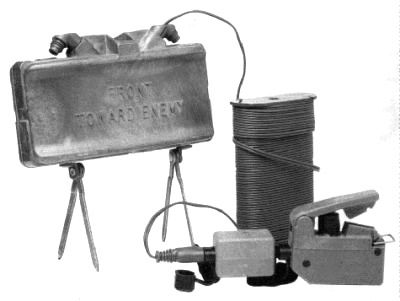
Combat Infantryman's Badge - A medal awarded for being under fire in a
combat zone.

CO - Commanding Officer.
CONEX - Container Express was a rigid steel reusable
shipping container 8' 6" long, 6' 3" wide, and 6" 10" high, with a double
door on one end. It was mounted on elevated skids to aid in fork lift handling
and had lifting rings on the top four corners for dock cranes or aircraft
attachment. We often used them as easily transportable housing for command
staff and medical clinics. They would be trucked or airlifted to a site
and clad in sand bags to provide small arms and shrapnel protection.
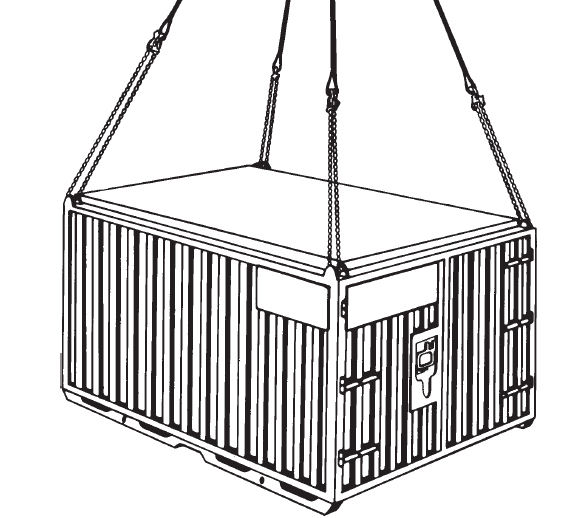
contact - Firing on or being fired upon by the enemy.
Cordon and Search. - An operation to seal off an area and search it without letting anyone escape scrutiny.
C-Rations - C-rations consisted of canned meat and vegetables, packed in preservatives, along with hard biscuits, often eaten cold under battlefield conditions.
Draft Status - Draft Categories which could be assigned in 1969.
|
Classification |
Definition |
|
I-A |
Available for military service. |
|
I-A-0 |
Conscientious objector available for non-combatant military service only. |
|
I-C |
A member of the armed forces of the U.S., the Coast and Geodetic Survey, or the Public Health Service. |
|
I-D |
A member of reserve components a or student taking military training. |
|
I-H |
Registrant not currently subject to processing for induction. |
|
I-0 |
A conscientious objector available for civilian work contributing to the maintenance of the national health, safety, or interest. |
|
I-S |
Student deferred by statute (High School). |
|
I-Y |
Registrant available for military service, but qualified for military only in the event of war or national emergency. |
|
I-W |
Conscientious objector performing civilian work contributing to the maintenance of the national health, safety, or interest. |
|
II-A |
Registrant deferred because of civilian occupation. |
|
II-C |
Registrant deferred because of agricultural occupation. |
|
II-D |
Registrant deferred because of study preparing for the ministry. |
|
II-S |
Registrant deferred because of activity in study. |
|
III-A |
Registrant with a child or children; registrant deferred by reason of extreme hardship to dependents |
|
IV-A |
Registrant who has completed service or sole surviving son. |
|
IV-B |
Official deferred by law. |
|
IV-C |
Alien. |
|
IV-D |
Minister of religion or divinity student. |
|
IV-F |
Registrant not qualified for any military service. |
|
IV-G |
Registrant exempt from service during peace (surviving son or brother). |
|
IV-W |
Conscientious objector who has completed alternate service contributing to the maintenance of the national health, safety, or interest in lieu of induction into the Armed Forces of the United States. |
|
V-A |
Registrant over the age of liability for military service. |
Duster - A self propelled light tracked vehicle with a main
armament of twin 40 mm cannon mounted in an open-topped turret. Each gun
has a cyclic rate of fire of 120 rounds per minute. It could reach out up to
9,475 meters. Loaded by four round clips, the point detonating, high explosive,
tracer rounds would create a dense zone of deadly fragments. We used them
mainly for convoy security.
E-8 Launcher. This is a suitcase size fiberglass launcher,
rectangular, about 2 feet high, with 8 tubes in it - each with 8 - 35mm tear gas
projectiles. It will shoot all 64 CS grenades in four 5-second bursts of 16
each, about 250 meters, turning an area about 50-100 yards white with CS gas.
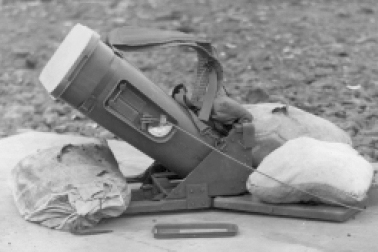
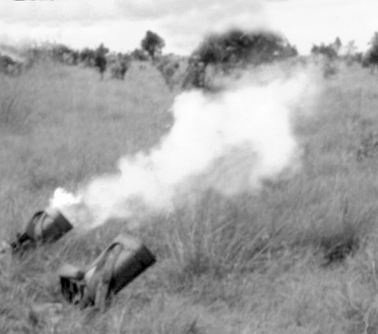
Elephant Grass - A cane like grass with sharp edged leaves. Thickets were normally over head high and so thick that you had to use a machete to hack your way through them.
entrenching tool - A small folding shovel used to dig fighting positions. It could be locked in a right angle hoe or in the fully extended shovel position. The narrow spike on the back was used as a pick and could also be locked in right angle of fully extended positions.
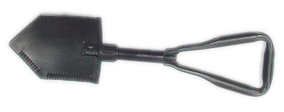
Executive Officer - The Company Commander's personal assistant and second in command.
fatigues - Standard solid green combat uniform. In the field, they carried no rank or name tags. They were delivered in bulk, washed and tumble dried and you just took any that would fit.
FNG - I am not sure of the origin, but I was the
first person in my unit to use the term F___ing New Guys, to refer to the new
replacements. We normally teamed them up with an old timer who would try
to keep them alive long enough for them to learn the ropes. They were KIA
more often than any other group. Their lack of experience and fear were
often fatal. This explains why we were reluctant to learn their names at first.
They were usually referred to by job title or FNG or a nickname. The less you
knew about them, the less it hurt when you had to zip them into a body bag.
Fougasse Mine - also flame trenches, a trench 2
feet deep filled with napalm on top of demolition cord. When the cord
exploded it threw burning napalm into the air on an attacking enemy. The
fougasse mine was a 55-gallon drum loaded with plastic explosive and filled with
napalm.
When detonated it threw burning napalm in a specific direction at an attacking
enemy. We found that C-4 plastic explosive worked better, since it had a slower
detonation rate and threw the napalm better.
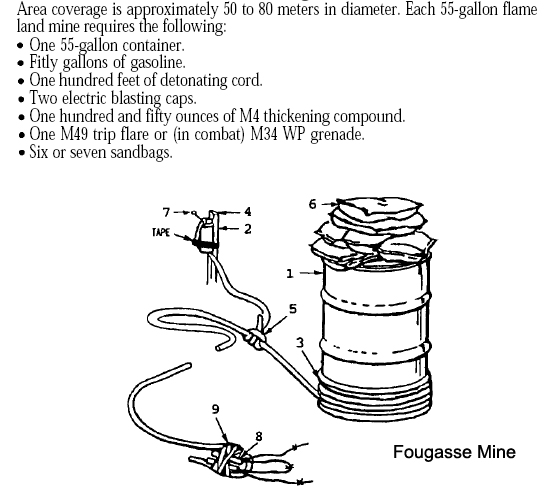
Free Fire Zone - An unsettled area, where only enemy combat troops and our own would be encountered, therefore permitting freedom to fire at anything without concern for hitting civilians.
FSB - Fire Support Base, temporary artillery base for support of combat operations, also sometimes referred to the location of your unit headquarters and mortar section that provided fire support for patrols into the surrounding area. Sometimes also simply called a fire base, FB. These bases were sometimes given names, but most often were only referred to by numbers.
Graves Registration - Quartermaster unit that identified, embalmed, and prepared bodies of those killed in action for shipment home.
Grunt - Slang name for an Infantryman in Viet Nam. Probably
derived from the grunt made when getting to your feet wearing the heavy
rucksacks full of food, water, ammo, and personal gear.
Hump - Slang for marching cross country with a rucksack.
IG - Inspector General. A group that works for the Secretary of the Army and the Chief of Staff of the Army, inquiring into and periodically reporting on the discipline, efficiency, economy, morale, training, and readiness of units throughout the Army. The annual IG inspection was like a report card on the unit. Heads would roll if many deficiencies were found.
jungle penetrator - A three armed anchor like seat, lowered by winch and cable from hovering helicopter down through the jungle canopy, with the arms folded up against the cable to permit it to penetrate the vegetation. It would often pick up quite a static electricity charge and had to hit the ground to discharge before you grabbed it. Two or three men could sit on the arms, when extended and hook straps around their backs to be winched up out of the jungle into the waiting helicopter.
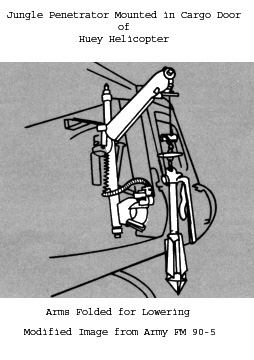
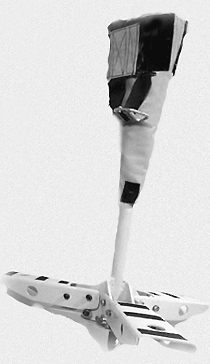
You sat on the arms and were pulled up into the helicopter by the winch.
There was a harness, but often time did not permit it's use, so you just hung on
for dear life, or a buddy rode up with you. In triple canopy jungle, it
was often the only means of getting the injured out of the area. Wounded were
frequently hit by additional gunfire on the way up through the jungle canopy.
KIA - Killed in action.
klick - Slang for kilometers, used since military maps had distance marked off with kilometer grid scales. One klick is equal to 0.62 miles.
line companies - Refers to companies up on the front lines, from the old times when there were fixed lines of engagement. In Viet Nam it meant those of us actually engaging the enemy.
LOH - Light Observation Helicopter. Pronounced and sometimes spelled Loach. Affectionately called the Flying Egg, because of it's egg like shape. Initially fielded in Viet Nam in early 1968, the Hughes OH-6A was used for command and control, observation, target acquisition, and reconnaissance. It was quite effective when teamed with the AH-1G Cobra attack helicopter as part of Hunter Killer Teams. The OH-6A, LOH would find targets by flying low, "trolling for fire", then marking the target with colored smoke for the Cobra, attack helicopter to strike. The Cayuse could take a lot of small arms fire and still bring the crew home safely. The OH-6A could be armed with the six-barrel 7.62mm minigun or a 40mm grenade launcher.
LP - Listening Post. Usually three soldiers just outside the killing zone of your night perimeter, who would stay alert all night long and provide early warning of approaching enemy.
LRRP - Long Range Reconnaissance Patrol. An elite team usually composed of three to eight men, who go deep into enemy territory to observe enemy activity without initiating contact.
LZ - Landing Zone, a clearing wide enough for a helicopter to land safely.
Machete - 18-22 inch blade cutting knife. Used for clearing jungle growth to permit passage of troops.

mess hall - Place where hot meals were served, usually a canvas tent in the forward trains areas, where you got your food and then went back to your own tent or bunker to eat, thus avoiding a large concentration of troops, that might attract enemy artillery fire. Further away from the fighting, such as, Division Base Camp, it might be a building, where you could actually sit down out of the weather to eat.
MIA - Missing in action. Designation when the soldier is not accounted for after a combat action. This could result from enemy capture without witnesses, or from total destruction of the body by explosives, or other such events, where there is no body, and no eyewitness verification as to the soldiers disposition.
Morning Report - document produced by every unit of the Army every morning that details all personnel changes for the day. Reasons for an entry on the Department of the Army Form-1, (DA-1) morning report are: assignment to or leaving unit - leave of absence - going to hospital for treatment - going for long term training - promotion or demotion - being killed, wounded, or missing in action.
MP - Military Police, usually organized and led the convoy's from
Division Base Camp to the Brigade Forward Support Base and unit
trains areas.
MPC - Military Payment Certificates were a form of payment used to prevent
profiteering by black market exchanging of US Greenback currency. You could
often get twice the exchange rate on the black market for legal US tender.
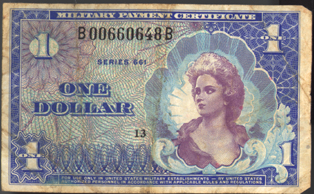
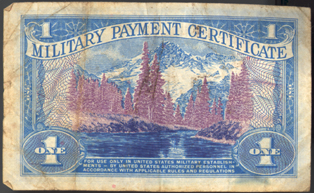
NCO - Noncommissioned Officer. Usually a Squad Leader or Platoon Sergeant.
NVA - North Vietnamese Army.
OCS - Officer Candidate School. In service training program to promote qualified enlisted men into the ranks of the officer corps, through leadership training.
This mission quote from the official OCS homepage is...
to train selected personnel in the fundamentals of leadership, basic military skills, instill professional ethics, evaluate leadership potential, and commission those who qualify as second lieutenants in all sixteen basic branches of the Army.
OER - Officer Evaluation Report. An Officer's "report card". This evaluation is done by your immediate superior and reviewed by their immediate superior. It is part of your official personnel record, and is a key document in career evaluation leading to promotions and critical career shaping job assignments.
OIC - Officer In Charge.
OP - Listening Post. Usually three soldiers just outside the killing zone for your perimeter, who would stay alert and provide early warning of approaching enemy during daylight hours.
Point Man - The lead soldier when the unit was on the move. Often having to cut a path through the dense vegetation. The most likely one to trip booby traps and the first one to make contact with the enemy. A very scary place to be.
POW - Prisoner of war.
PSP - Pierced Steel Planking,
used to construct runways and other durable surfaces over soft ground.
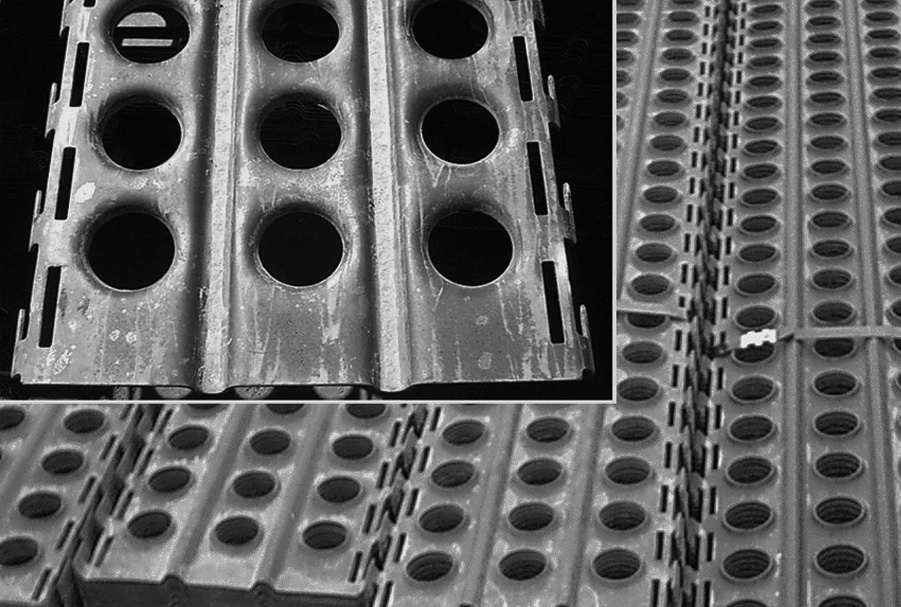
PX - Post Exchange. The barber shop/convenience store/catalog sales facility for shopping in the larger base camps. Usually co-located with Divisional Units.
Quad 50 - The M-55 Quad 50, known as " Whispering Death" had four 50 caliber machine guns mounted on a deuce and a half truck. It had a combined 1,500 rounds per minute rate of fire, blanketing an area up to half a mile away. It was frightening to hear it firing. I can't imagine what it must be like to be on the receiving end. They were used mainly for convoy support.
RECONDO - (Reconnaissance Commando) patrol teams were established at battalion and brigade level in SEP 1966, by Major General Arthur S. Collins, Jr., 4th Division Commander. Initially limited in number and scope, during Operation Sam Houston, Division reconnaissance was strengthened and a Division sniper course instituted. RECONDO teams consisted of two American members and two Rhade tribesmen, who exhibited hunting and terrain prowess. Each team completed a ten-day course to learn mutual signaling and survival skills. Initially RECONDO teams were given three primary missions: (1) Trail Watching, to observe and report enemy movements; (2) Terrain Analysis, which included the important Central Highlands task of locating suitable helicopter landing zones; and (3) Screening during Division operations to the front or flanks of regular infantry formations.
RTO - radio telephone operator. The soldier who carried the radio on his back in the field.
saw grass - Saw-grass is so named because it has serrated leaf blades that resemble a saw. Really cuts up unprotected skin. Usually about waist high.
Shake 'n' Bake Sergeant or Instant NCO's - Soldiers who attended NCO school and earned rank after only a very short time in uniform. Looked down upon by other NCO's, who earned their rank through time and service, the were lacking in experience, but my personal encounters with them in several units in combat, showed them to be competent and very dedicated soldiers. Without them, the lack of regular NCO's would have made command virtually impossible in the jungles of the Central Highlands. In the decentralized combat necesitated by the jungles, the NCO's did most of the actual leadership. My job as commander was mostly one of coordination among units above and within my unit and communication of information up and down the chain of command. I controlled supporting fires, arranged resupply and Medevac, and supervised the operations back in the Field Trains Area, but the person, who actually got the men to obey my orders and got the job done, was always the NCO. As Platoon Leaders and Company Commanders, we depended on these NCO's to manage and motivate their soldiers. As everyone really knows, it is the NCO who actually makes the Army run.SKS Rifle - SIMONOV 7.62mm SELF-LOADING RIFLE , a semi-automatic carbine with an effective range of 400 meters with a 10 round integral magazine. The SKS resembles a conventional bolt action rifle but is equipped with a folding bayonet under the muzzle.

Spooky - AC-130 aircraft, also known as “Puff the Magic Dragon,” a reference to the sheet of flame and noise produced by the thousands of mini-gun tracer rounds pouring forth from the night sky directly onto the helpless enemy below. They could provide devastating firepower within dangerously close proximity to U.S. forces. Puff carried 21,000 rounds and three 7.62mm mini-guns with a fast (16,000 rounds per minute) or slow (3,000 rounds per minute) rate of fire and carried 24 to 56 flares, manually thrown out the door, and some carried 20mm gatling guns that fired at 2,500 rounds per minute.
You would hear...
BBBRRRRRRRRRRAAAAAAAAAAPPPP.
Suddenly The dragon's deadly breath descended in a solid red tongue of death, every fifth round a red tracer, but the rounds coming so fast that it looked like a solid line of bullets, with the explosions of the 20mm high explosive shells mixed in adding to the terror. Within seconds an area the size of a football field has been hit with a 7.62 mm bullet in every square foot and blanketed with 20 mm HE shells..
BBBRRRRRRRRAAAAAAAAAAAAPPPPP.
Will it never end????
Captured NVA documents warned against shooting at the Dragon. It said their weapons would be useless and it would only anger the beast. It was even terrifying to us as it came in, sometimes within yards of our own perimeter. It usually signaled the end of that particular engagement.
punji stake - A very sharp bamboo stake that is concealed at an angle in high grass, in a hole, or in deep mud, often coated with excrement, and planted to wound and infect enemy soldiers.
R&R - Rest and Recreation. Either a three day pass to Vung Tau or another of the in country recreation areas, or a seven day leave to an out of country vacation. I took my seven day R&R to Australia, where I made my first parachute jump and had my first parachute malfunction at the same time. So much for rest and relaxation.
RIF - Reconnaissance In Force. Heavily armed unit searching an area, looking for signs of enemy activity and prepared to engage the enemy if found.
rucksack - Backpack issued to Grunts in Viet Nam.
Sapper. - An NVA soldier trained to quickly infiltrate your defensive perimeter, usually carrying explosives for the purpose of sabotage.
saw grass - Saw-grass is so named because it has serrated leaf blades that resemble a saw. Really cuts up unprotected skin.
SITREP - A radio check requesting the status of a unit. Listening Posts outside the unit perimeter are normally called every half hour to insure someone is awake and to get their status. If everything is OK they reply by keying the handset a predetermined number of times, causing static (squelch) sounds. If situation is not OK, they break squelch a different number of times, or make no response at all.
slack man - The second man in a column, directly behind the point man when you were moving in single file. The second most dangerous place to be because if the point man saw something and ducked, the slack man would not be able to hit the dirt before the shooting started.
SRP. - Short Range Patrol. Usually a three to five person patrol to look for enemy activity. If activity was spotted, they would normally call in artillery and return to main unit perimeter. They would usually stay close enough to main unit for quick reinforcement if contact was made.
Starlight Scope - A scope with image intensifier tube that used reflected light (usually starlight) to see through the darkness up to 200 yards.

steel pot - The standard US Army combat helmet. The steel pot referred to the outer steel shell. It was usually covered with a cloth camouflaged cover and had a fiberglass inner liner with supporting straps and a headband for comfort. We sometimes used the outer steel cover to cook stew made from C-rations, therefore the term steel pot.
TOC - Tactical Operations Center. The location of the command and control headquarters of the Battalion. The war was managed by the staff located here. Usually located on a Fire Support Base (FSB) and guarded by one of the line companies.
trains - The personnel, vehicles, and equipment following and providing supplies and services to a combat unit.
WIA - Wounded in action.
ZAP - To kill or seriously injure. Zap numbers were assigned to unit members in order to identify them over the radio when killed or seriously wounded, without letting the enemy know their names.
All Email addresses are in picture format only to discourage web bots from harvesting for junk mail lists. Type them into your mail manually. Site designed for Internet Explorer Version 6.0 or higher, viewed with text size medium and desktop resolution of 1024 x 768 pixels.
Webmaster:Homer R. Steedly Jr. (Email: Swamp_fox at earthlink.net) Copyright 08/12/1995 - 10/19/25. Commercial Use of material on this site is prohibited.